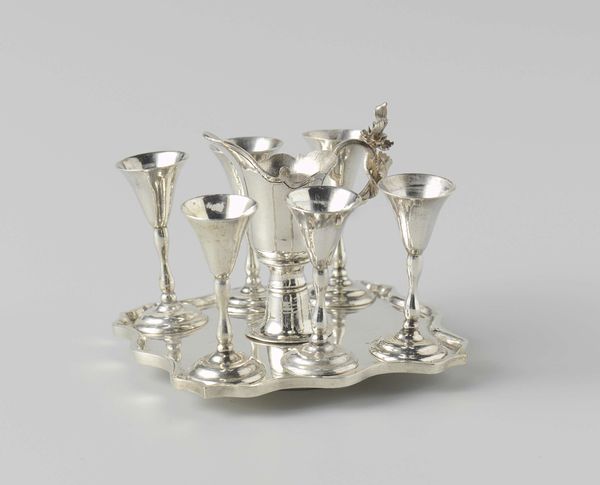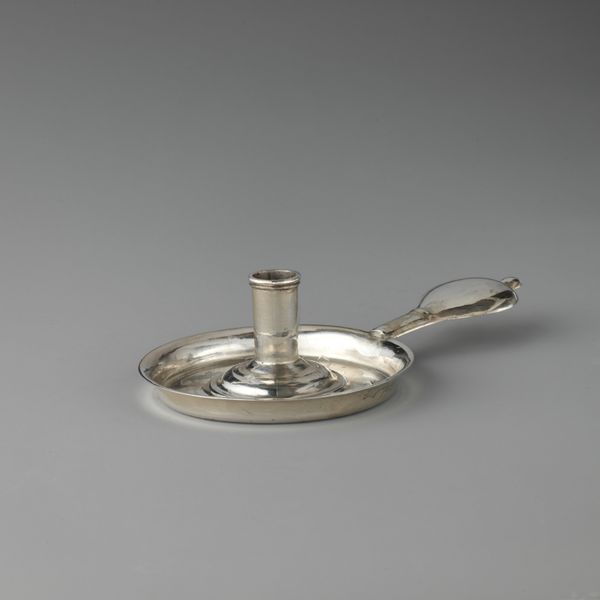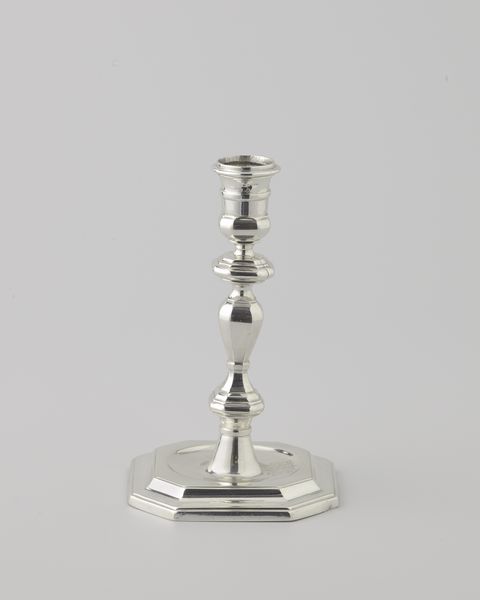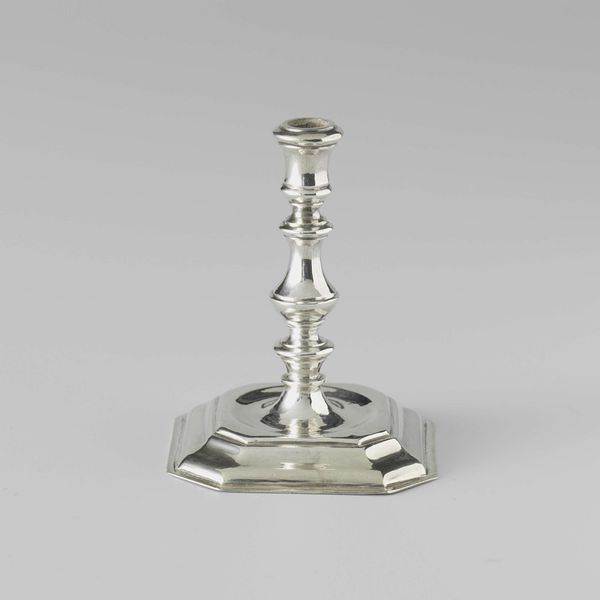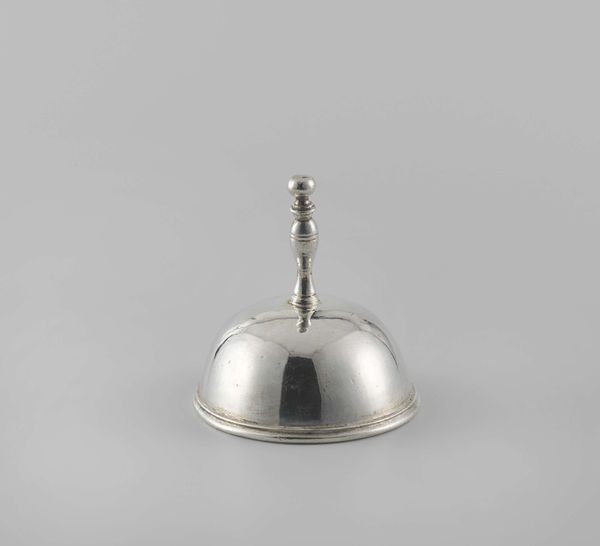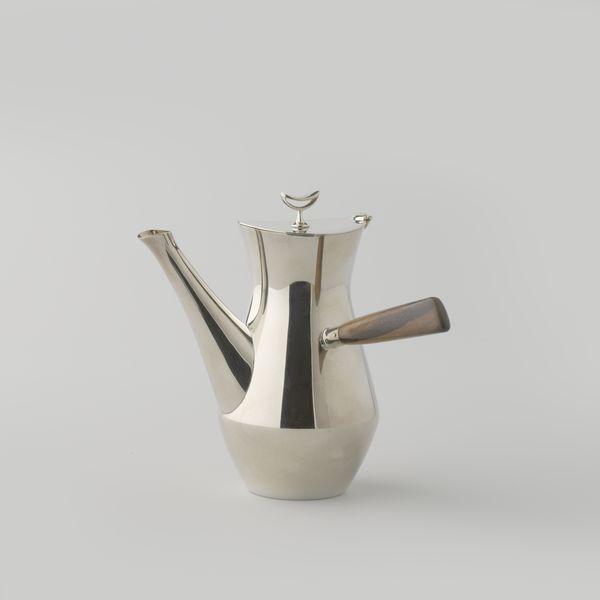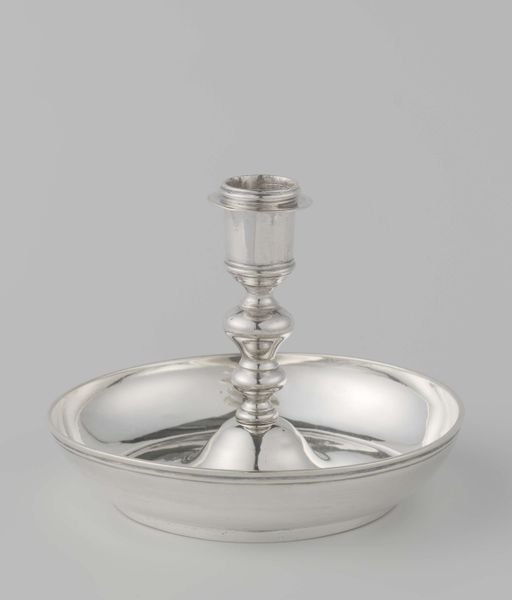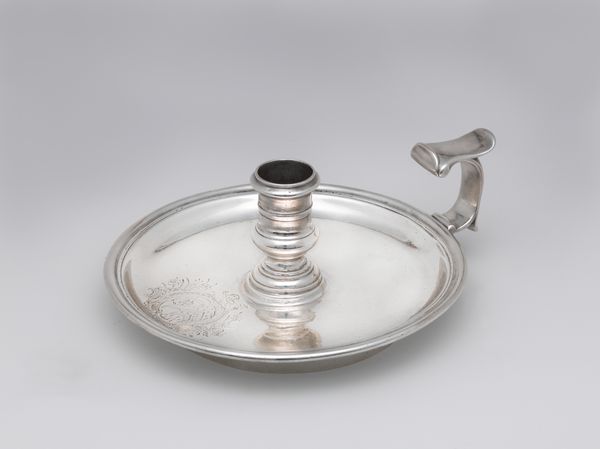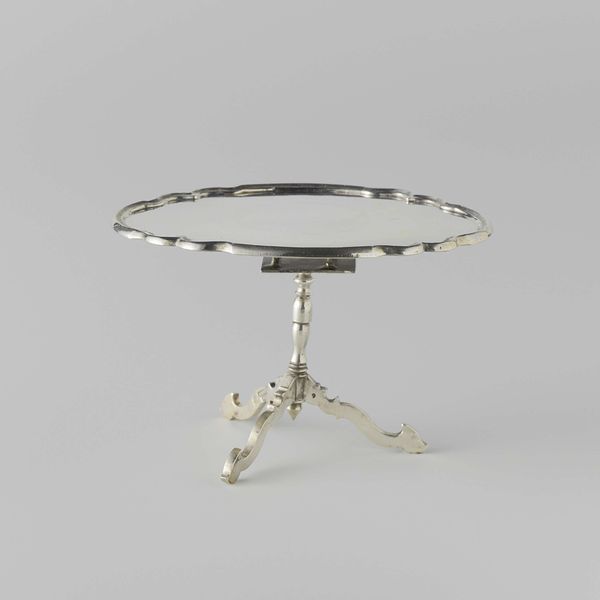
Dimensions: height 8.5 cm, width 21.1 cm, height 8.8 cm, weight 408 gr
Copyright: Rijks Museum: Open Domain
Editor: So, this is “Candlestick with extinguisher, decorated with pearl rims,” crafted in 1779 by Hendrik Christoph Nicolaas Wiedeman. It’s made of silver and the reflective surface is just so striking. What stories do you see embedded within its shiny façade? Curator: This candlestick immediately speaks to ritual. Not just the daily ritual of lighting a candle, but also the act of consciously extinguishing it. Think of the extinguisher as representing closure, a controlled end, perhaps even a miniature symbolic death. Editor: Miniature symbolic death? Wow, I hadn't considered that. Can you expand on it? Curator: Well, light has, across many cultures, symbolized knowledge, life, and hope. To deliberately snuff it out with a tool designed for that sole purpose suggests a very deliberate act. Consider, too, the pearl rims – pearls often representing purity or tears. Are we mourning the end of the light? Are we consciously aware of what we give up when we put things to rest? Editor: That's so interesting! It is a Baroque object, right, but does it still remind us to not fear the dark? Curator: Exactly. The pearl rims add an elegant note. Though associated with decoration, they invoke emotional connotations and create contrast of baroque flamboyance and symbolism to reveal an awareness that what begins must end and even elegance of design won't protect us from darkness. Editor: I never would have noticed those details carrying so much weight! Thank you, this gave me much food for thought. Curator: It’s remarkable how an everyday object can reveal our complex relationship with endings. Thinking about such a work in this way shows us that there can be so much cultural history and visual information present in even the simplest items.
Comments
No comments
Be the first to comment and join the conversation on the ultimate creative platform.

